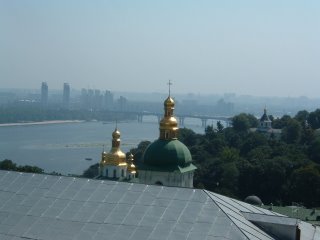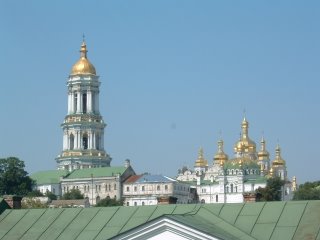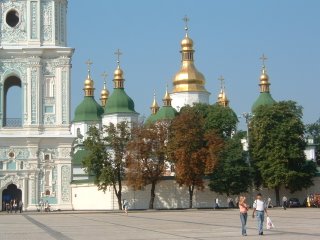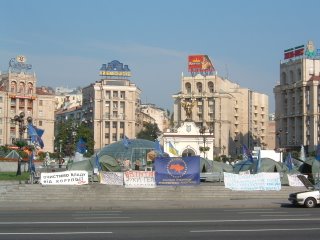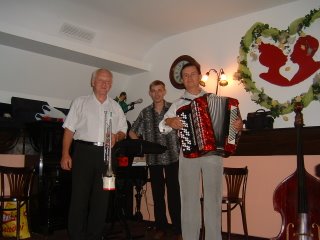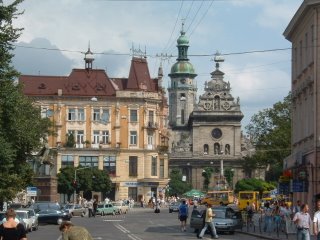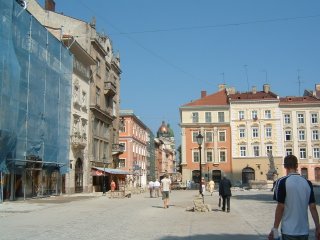Charm and Horror
Cracow and Auschwitz, August 21-24
Cracow is charming. The capital of Poland until 1609, it reflects both its Polish heritage and international influences introduced under the Habsburgs from the 18th Century until the 20th. The city’s huge main square, the Rynek Glowny, contains a wealth of fantastic art and architecture, especially St. Mary’s Church with its famous Veit Stoss altarpiece, which we watched a little nun open (with some difficulty as the doors are massive) to reveal its magnificently carved interior portraying the Dormition of the Virgin with Apostles who look suspiciously like Cracow townspeople. The church’s exterior is dominated by its crown-shaped tower, from which a trumpeter in the Middle Ages is said to have sounded a warning of an approaching Tatar raid but was cut down by a Tatar arrow before he could finish his bugle call. Today his heroism is commemorated every hour by a bugler on the tower who abruptly stops his call at the precise moment when his legendary predecessor was supposed to have been hit.
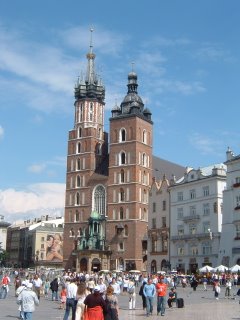
St. Mary's Church on Rynek Glowny
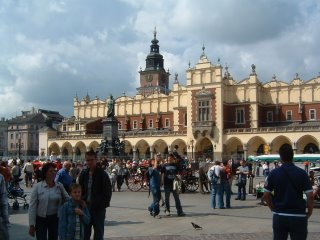
Sukinnice (cloth hall) on Rynek Glowny, Cracow
The city was well filled with tourists, who were welcomed with free music and dance performances in the Rynek Glowny, excellent but reasonably priced meals (with vodka, of course), and well organized arrangements for visiting Cracow’s many tourist attractions. We particularly enjoyed touring Wawel Hill, where the castle and cathedral stand side by side. The cathedral is Poland’s Westminster Abbey with burial sites of the country’s kings and other notables, including Tadeusz Kosciuszko of U.S. Revolutionary War fame. (This church was, of course, the seat of John Paul II when he was Archbishop of Cracow, and the city is full of plaques honoring his memory.) The castle contains outstanding tapestries and the remarkable “Heads Room,” an audience hall featuring carved heads of 16th Century burghers reputedly placed on the ceiling to remind the monarch that his actions were under scrutiny. However, the best part of the Wawel for younger visitors is a large cave, reputed to be the den of the dragon Krak; long deceased, he is represented by a fire-breathing statue.

Polish folk dancers on Rynek Glowny, Cracow
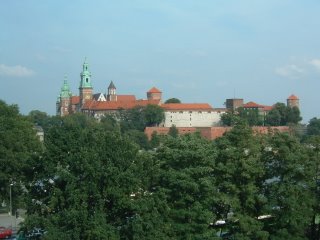
Wawel Hill from our hotel
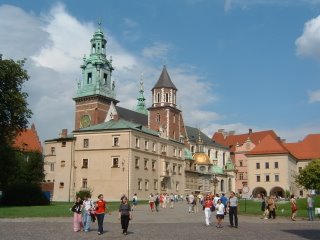
Cathedral and palace, Wawel Hill

Gargoyles on Cracow cathedral
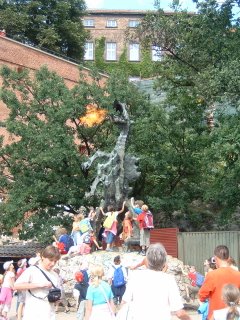
Krak and friends
The Jewish heritage of Cracow gained considerable attention through “Schindler’s List,” which Steven Spielberg filmed largely in the city. We toured both Kazimierz, the traditional Jewish quarter, and Podgorze, where the entire Jewish population was forcibly resettled in 1941, and visited several of the small privately run museums. However, we came away sad that the museums had not pooled their efforts, for none does an adequate job of explaining what happened in Cracow during the Holocaust. We were impressed, nonetheless, by a monument of empty chairs on the main square of Podgorze and surprised to find that the building of Oskar Schindler’s “Emalia” factory is still standing.
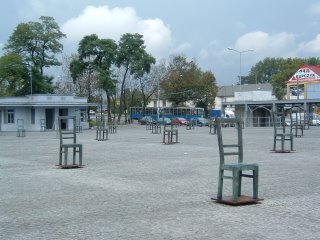
Jewish memorial in Cracow
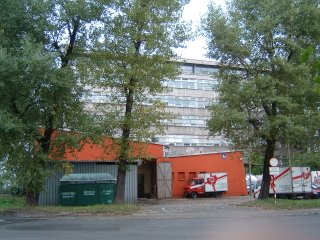
Oskar Schindler's factory building in Cracow
Our last day was spent at Auschwitz, 70 kilometers to the west of Cracow. Although we knew the history and had seen many films about the Holocaust, both commercial and documentary, nothing prepared us for the emotions we experienced. Above all, we were overwhelmed by the scale at Auschwitz-Birkenau, the biggest installation in the complex, which covers some 175 hectares (425 acres) and housed some 100,000 people in appalling conditions at peak capacity. However, most new arrivals went directly to the gas chambers and crematoria, which killed and burned 60,000 people a day at the height of the slaughter. The men’s barracks were made of wood, which was burned or dismantled when the camp ceased to function so all that remains is an enormous field of brick chimneys for the huts’ inadequate heating systems. The gas chambers and crematoria were dynamited, but the destruction was so incomplete that the outlines of the facilities remain visible. Appallingly, as we learned from our guide, the human ash from the crematoria was generally given to local farmers for fertilizer. Since between one and a half and two million people were killed there, she explained, the whole area is a giant columbarium.

Main gate at Auschwitz I ("Arbeit Macht Frei")
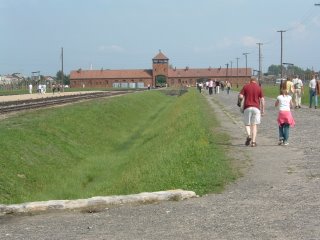
Main gate and railroad tracks, Auschwitz-Birkenau
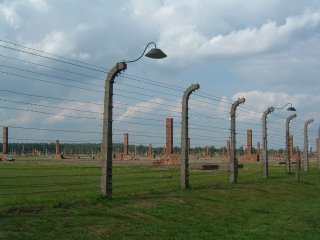
Site of men's barracks, Auschwitz-Birkenau

Dynamited gas chamber and crematorium at Auschwitz-Birkenau
